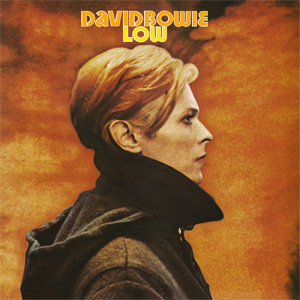Welcome back to the list of David Bowie‘s 10 best albums. In Part 1, we saw a diverse array of music that shows just why Bowie is as highly regarded as he is. Now, it is time to take a look at his five best albums.
5. Aladdin Sane
Most of Aladdin Sane was written while on his first-ever tour of the US. Due to this, many tracks are based on Bowie’s perception of the country. The result was an album examining the decadent and excessive life of a rock star. Aladdin Sane‘s American influence and the album’s fast-paced development helped develop a tougher, rawer take on his famous glam rock sound. “Panic in Detroit” is a surreal narrative of urban paranoia and failed revolution inspired by the Detroit 1967 riots. Other tracks, such as “Cracked Actor” and “The Jean Genie,” lean further into the Americana theme of the album. The album also features a cover of “Let’s Spend The Night Together” by The Rolling Stones since they were a major influence on the album as well. Much like Ziggy Stardust, Aladdin Sane is the story of a man experiencing a brand new world for the first time.

4. Heroes
Recorded entirely in Berlin, Heroes emphasizes tone and atmosphere more than standard instrumentals. The lyrics throughout the album were often obscure and evasive with many songs being made up on the spot. Songs like “Joe the Lion” and “Blackout” saw Bowie singing at the top of his lungs, pushing his voice to emotional states that have never been heard from him before. The vocals on “Heroes” go from calm and relaxed to a near-scream as a strange sense of soothing hopefulness emerges from the words sung. There are a fair amount of instrumental tracks as well, such as “V-2 Schneider” and “Neuköln,” which reflect on the eerie ambience of Berlin at the time. All things considered, Heroes is a tale of soul searching and growth, both artistically and personally.

3. Station to Station
Prior to recording Station to Station, Bowie spent much of his time in a state of psychic terror due to his copious drug habits. As his life descended into mayhem and turmoil, the music he made reflected his manic state of mind, and thus, Station to Station was born from the madness. The album featured Bowie’s newest persona, the Thin White Duke, an emotionless aristocrat with an agonizing intensity. On songs “Word on a Wing” and “Golden Years,” the Duke is intense yet detached as he reflects on his dark past and tests his numbness. Other tracks like “TVC15” were inspired by The Man Who Fell to Earth, a film Bowie had been working on simultaneously. Station to Station was considered a transitional album for Bowie as he deviated from his show-stopping rock star persona to more experimental terrains.

2. The Rise and Fall of Ziggy Stardust and the Spiders From Mars
Bowie’s fascination with space and aliens had already been made clear in songs like “Space Oddity” and “Life on Mars?,” but Ziggy Stardust took it to a whole new level. Bowie explained, “Until that time, the attitude was ‘What you see is what you get.’ It seemed interesting to try to devise something different, like a musical where the artist onstage plays a part.” A rock opera in the truest sense, the album follows Ziggy, an alien rock star sent to Earth five years before the end of its existence. Ziggy is a wild, self-indulgent figure who delivers a message of hope and peace before being destroyed onstage by his own disciples. From start to finish, Ziggy Stardust is an electrifying album that permanently shifted the cultural aesthetic of rock music.

1. Low
After helping produce Iggy Pop‘s debut solo album, The Idiot, both Bowie and Pop moved to Berlin to escape the spotlight. The electronic and ambient music styles that were popular in Germany at the time were a big inspiration to Low. The album was split into two parts; the first contained short, direct song-fragments, and the second was comprised of longer instrumental tracks. “Breaking Glass” and “Sound and Vision” reflect on Bowie’s tortured mental state following years of drug addiction. Low forges a seamless partnership between songs and feelings and creates a world that can be inhabited for 38 minutes at a time, which is why it is Bowie’s best album.

Media by Cole Simpson.




























